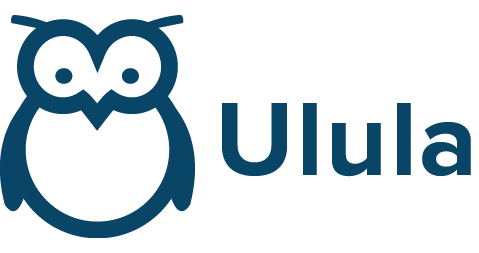With the S-211 forced labor regulation, Canada is taking steps to ensure companies are ready to eradicate forced labor from their supply chains. Similar regulations are forthcoming in jurisdictions all over the world and some, like the EU’s HRDD laws, are more stringent than Canada’s. As a result, the new regulation represents an important starting point for Canadian companies that will also be subject to various other regulations in their international operations.
We recently wrote about the five most common misconceptions companies have about implementing human rights policies in their supply chains. With regulatory action and enforcement incoming, taking swift and systematic action is no longer optional for companies subject to the new law.
Companies operating in Canada need to take steps to report on their efforts to fight forced labor in their supply chain. The first report will be due by May 31, 2024. That’s just over a year away, so here are five practical steps companies can take to prepare for Canada’s era enforcement for reporting requirements.
1. Get Familiar with the Law
To comply with the law, companies must know the law. That means understanding the “whos”, the “whats”, the “whens” and the “if nots” of the regulation inside and out.
Non-compliant goods can be stopped at Canadian customs, causing delays and incurring extra costs. Companies in violation of the law, either through inadequate/false reporting or obstruction can face fines of up to C$250,000, so they’ll want to make sure they understand what “compliant” really means under S-211. As current guidelines don’t distinguish between intentionally and unintentionally false reporting, companies will need to make sure their reports are watertight.
As for who, the law covers “any private sector entity” whose goods will enter Canada, as well as entities that control entities whose goods will enter Canada. That last part is crucial, as it pushes the onus of responsibility up the supply chain to a company’s governing bodies.
S-211 is not a ban on forced labor entering the country, Canada already has one of those as a clause in its free trade treaty with the US and Mexico; the Canadian government is planning to strengthen the ban on forced labor entering the country by 2024. S-211, on the other hand, mandates public disclosure of efforts to fight Modern Slavery in company supply chains. Disclosure is mandatory whether Modern Slavery in the supply chain is identified as a risk or not, which means all companies who want to trade in Canada are covered. A publicly available Supply Chain Risk Report will need to be provided to the Minister of Public Safety and Emergency Preparedness on or before May 31st every year.
With S-211, Canada is entering a new era of HRDD enforcement. Through diligent engagement with the regulation, companies can demonstrate that they’re prepared to tackle forced labor in their supply chains. Compliance requires companies not just to check boxes, but to understand the law’s underlying goals, implement new processes accordingly, and do more than what’s required of them to fight forced labor in global supply chains. The extraterritorial implications of other regulations, like the EU’s CSDDD, mean that companies need to go beyond S-211 to safeguard all of their global operations.
2. Promote Transparency
Companies ought to work towards achieving the Bill’s primary objective, promoting transparency between supply chain partners, the entities that govern them, the public, and the government entities that enforce the regulations. To do so, they should promote transparency within their own supplier network.
Companies that provide practical systems to foster open communication and transparency with their stakeholders are less likely to be blindsided by unintentional non-compliance. Effective Human Rights Due Diligence (HRDD) measures require companies to identify, prevent, mitigate and account for supply chain human rights abuses, so they can stay on the front foot. Establishing a single-point of entry HRDD platform designed to manage inputs from stakeholders, workers, case workers and suppliers will make it easier to collect the information that companies need to build transparency in the supply chain.
3. Set Expectations and Engage with Suppliers
S-211 expands accountability for human rights violations in the supply chain as employees and agents are seen to be acting on behalf of their employer. A requirement that an entity’s governing body approve the annual report ensures the entire company is tied together in the net of responsibility. This includes when human rights offenses occur in their supply chain. In this way, S-211 makes everyone in the supply chain responsible for abuses, and ties all actors together under the same banner of accountability and transparency.
It isn’t just the top levels of the company who need to show up when reports are due. Everyone in the supply chain needs to be pulling in the same direction. Supply chain partners who aren’t educated about new regulations are a risk to compliance and to the human rights of your workers. Companies will have to let them know what’s expected of them, and of the consequences for non-compliance.
4. Conduct a Risk Assessment
Risk managed is risk minimized. Promoting supply chain transparency will raise awareness of areas where the risk of forced labor is acute. Digital HRDD solutions are able to identify these areas and triage risk in the supply chain so HRDD policies are well informed and well targeted.
Companies can ensure their goods are ready to enter the Canadian market by identifying areas of the supply chain that pose the greatest risk of forced labor abuses. If this information is unavailable, engaging suppliers and workers directly in high risk geographies and commodities can play a critical role in identifying adverse impacts across the supply chain. Tailored, anonymised digital surveys on the success and execution of policies and procedures can unearth risks that would otherwise go unreported. A worker-first approach where surveys are tailored to meet the needs of vulnerable supply chain workers will yield robust data that accurately reflects life in the workplace.
Digital solutions that go direct to workers mean companies can keep their ears to the ground, and demonstrate to regulators that they’re doing all they can to prevent human rights risks. Analogue methods of data gathering like phone hotlines don’t provide the continuous feedback or the unfiltered worker engagement companies will need to show compliance. Companies ought to create proactive feedback loops with suppliers, workers and stakeholders to ensure they can anticipate risks before they’re big enough to hinder compliance and use the data to assess and improve the effectiveness of their policies and systems
5. Have Supply Chain Data at the Ready
To assure compliance, companies will have to get closer to supply chain partners and workers. They’ll have to close the information gap between governing bodies and the people they are trying to protect by gathering data that satisfies the law’s reporting requirements.
The law renders the entire company accountable to human rights risks, this means governing bodies will need access to first mile data before they can sign off on reports. Digital platforms present data in a digestible format with dashboards and analytics that will ease the reporting process. Middle management needs clear data to better prioritize resource allocation and make the case for intervention where risks are identified.
Canada’s modern slavery legislation heralds a new era for business and human rights in the country, but no one has to be left out of key markets or business opportunities. For robust and timely reporting, companies must start collecting data today, while ensuring supply chain insights lead to real impact for workers. Harnessing the scalability and cost effectiveness of digital tools can get them there.

